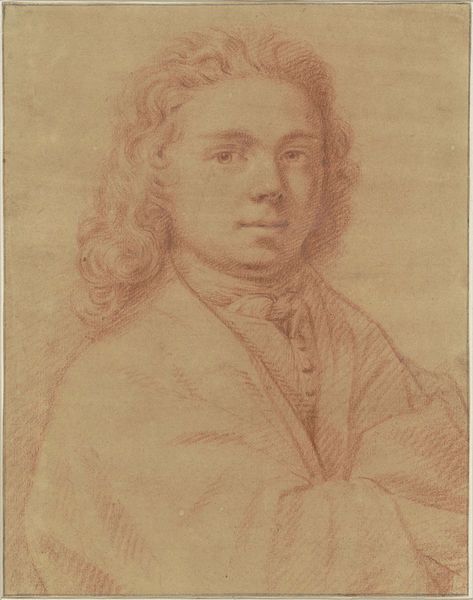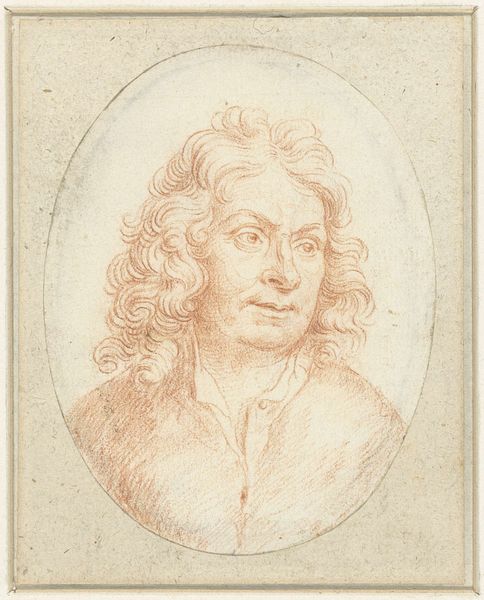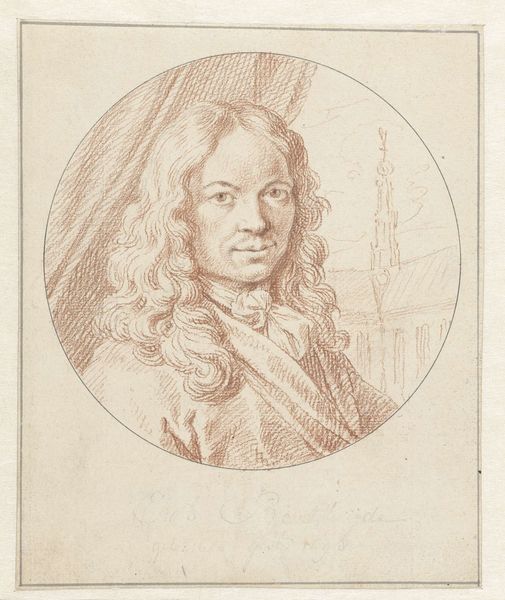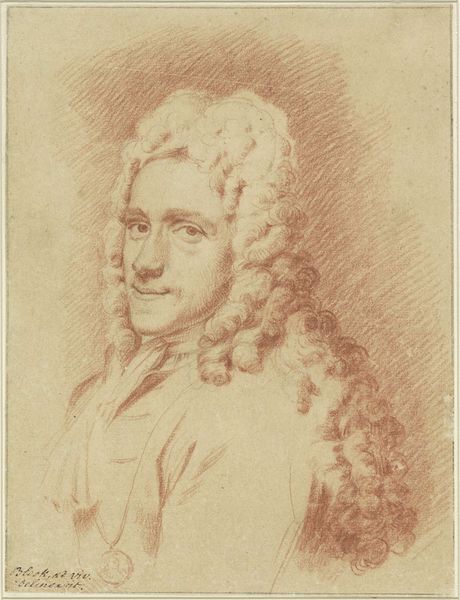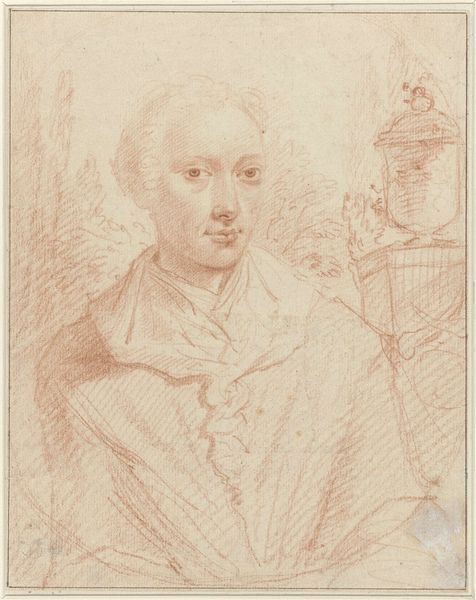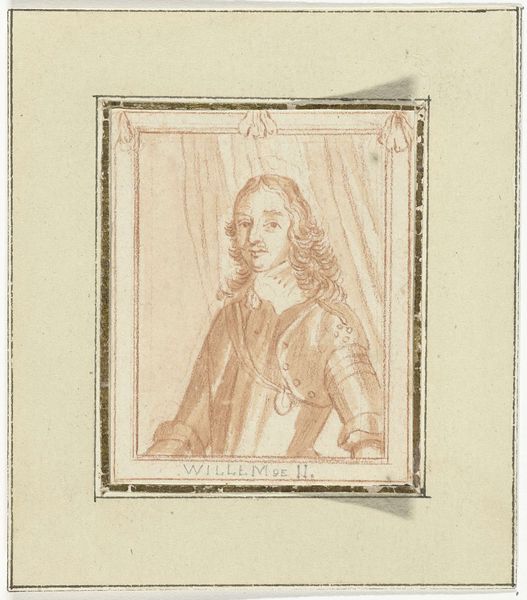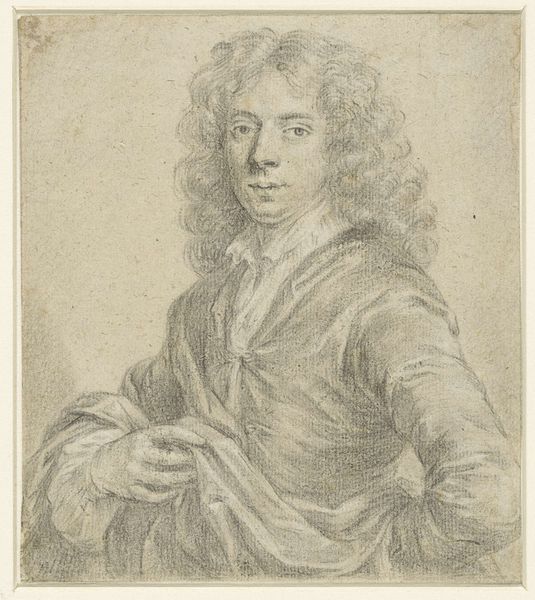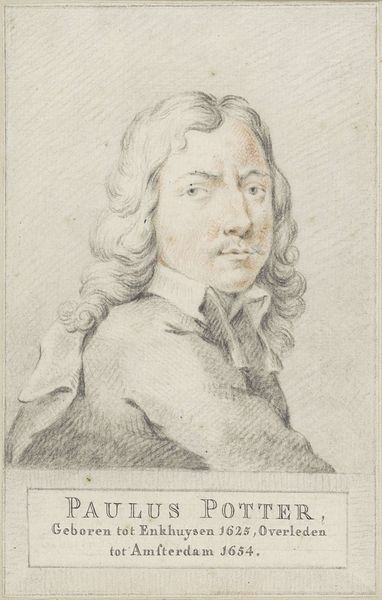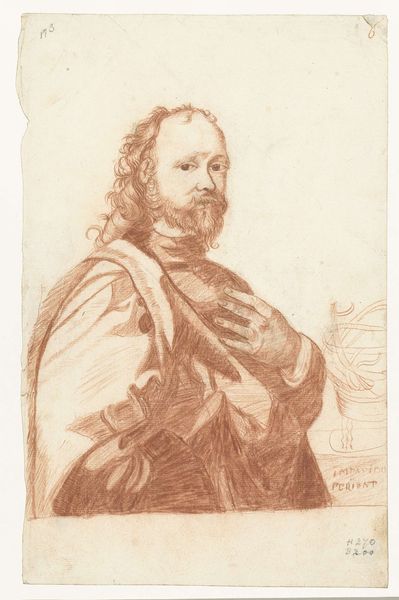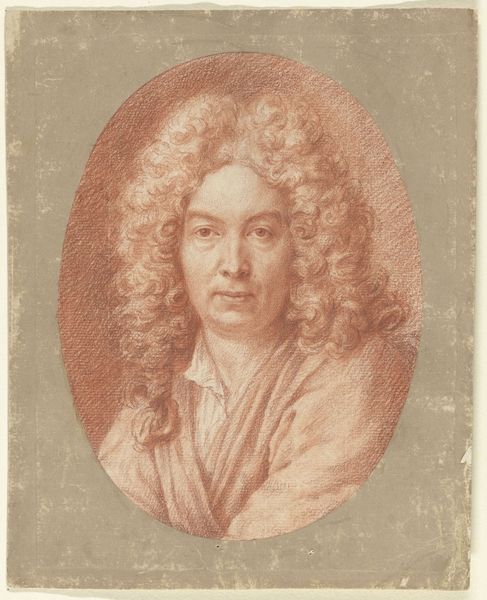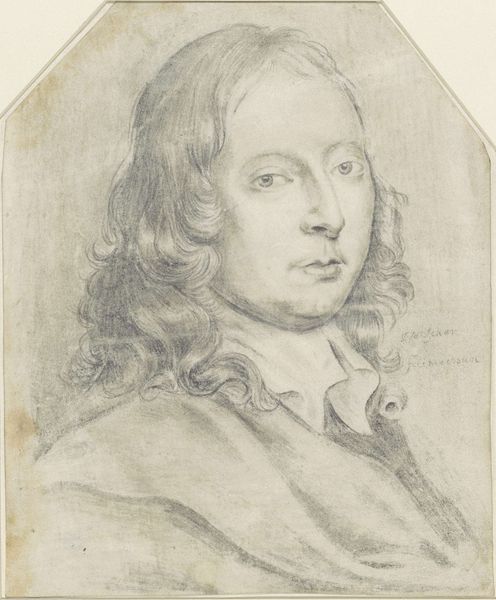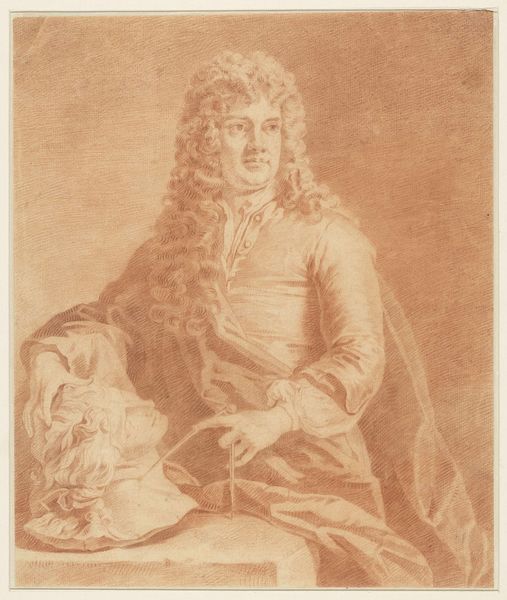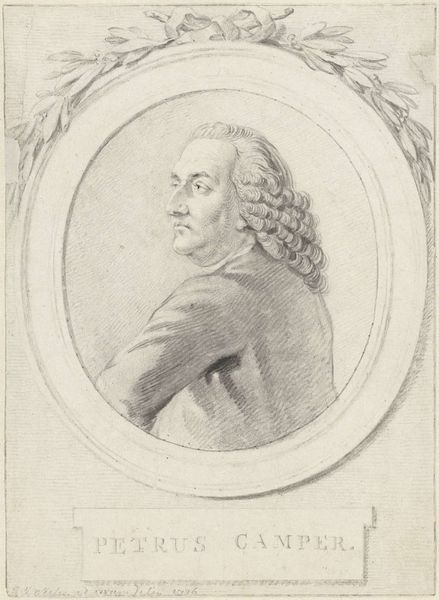
drawing, charcoal
#
portrait
#
drawing
#
baroque
#
charcoal drawing
#
pencil drawing
#
genre-painting
#
charcoal
Dimensions: height 247 mm, width 183 mm
Copyright: Rijks Museum: Open Domain
Curator: This is "Portret van Mattheus Brouerius van Nidek," a drawing crafted around 1700 by F. Berkhuys. It’s a compelling example of Baroque portraiture using charcoal. Editor: Striking! The use of line, the tonal variations of charcoal, give a somewhat somber yet refined mood. I find that the softness in the wig contrasts with the stark realism in the subject’s gaze. Curator: Yes, the texture achieved through charcoal is remarkable. Notice how Berkhuys employs hatching and cross-hatching to sculpt the form, creating depth and volume particularly in the drapery and that extravagant wig so typical of the era. Editor: Thinking about the Baroque era, the flamboyance evident in costume reflected a complex negotiation of social and political power. The artist has achieved an intriguing psychological study of status and individual personality. Who was this Mattheus Brouerius van Nidek? Curator: He was a prominent figure of his time, though not as famous as some of his contemporaries. These kinds of portraits served the essential function of affirming and solidifying social status. It was essential for demonstrating the persona. Editor: The texture of the charcoal on what I presume is laid paper…It lends a certain rawness to this demonstration of social dominance, it really does add a captivating layer to the drawing, a sort of… imperfection, almost. Curator: Absolutely. That subtle tension elevates the portrait beyond mere documentation of appearance. If you follow the angle from his left shoulder to the button details of his costume, that area really gives a compelling narrative. Editor: Considering the role of portraits during this period—displayed in private homes or public offices, it prompts a question: How did portraits influence social standing and perceptions of the sitter within their own community and further afield? Curator: Precisely! That question takes us into a discussion about Baroque art’s overall societal functions. Editor: A study of cultural values embedded in material choices that echo beyond initial observations. The semiotic reading offers just one possible conclusion. Thanks for highlighting it. Curator: And thank you, this formal assessment has deepened my appreciation.
Comments
No comments
Be the first to comment and join the conversation on the ultimate creative platform.
